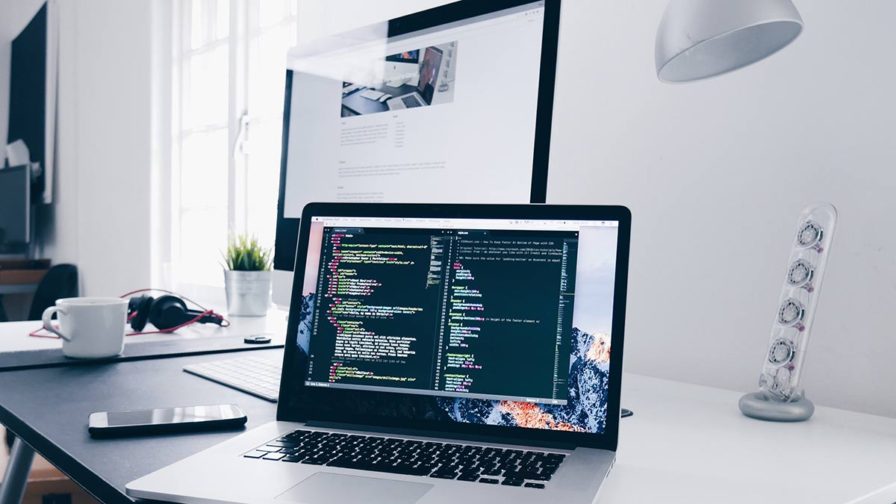Aligned Position Web Design: Your One-Stop Solution for Innovative Website Design and Development
Aligned Position Web Design: Your One-Stop Solution for Innovative Website Design and Development
Blog Article
The Best Kinds Of Website Design to Enhance Individual Experience and Involvement
In the ever-evolving landscape of electronic communication, the efficiency of Web style considerably affects individual experience and engagement. Different layout approaches, such as minimalist, responsive, and interactive layouts, each offer distinct benefits that can provide to diverse individual needs.
Minimal Web Style
As electronic landscapes come to be significantly cluttered, minimal Web layout has actually emerged as an effective technique to enhancing individual experience. This design ideology prioritizes simplicity, concentrating on vital components while eliminating unneeded disturbances. By using ample white room, uncomplicated navigation, and a restricted shade combination, minimal style promotes quality and guides user focus to essential web content.
The core concept of minimal Web layout is to produce a seamless communication for customers. By reducing cognitive load, customers can promptly grasp details without feeling overwhelmed. This straight technique not only enhances usability yet likewise encourages engagement, as site visitors are much more most likely to discover a website that is aesthetically appealing and very easy to navigate.
In addition, minimalist style commonly emphasizes typography and images, utilizing these elements tactically to convey messages efficiently. In significance, minimal Web layout is not simply a pattern; it is a thoughtful approach that acknowledges the importance of user-centered style.
Responsive Website Design
In today's varied electronic setting, receptive Web style has actually become necessary for producing a smooth user experience across a wide range of tools. As customers gain access to websites on smart devices, desktops, tablets, and laptops, the ability of a website to adjust its format and web content to various screen dimensions and resolutions is important.
Receptive website design utilizes adaptable grids, images, and CSS media questions to ensure that Web material exists efficiently, despite the gadget used. This strategy not only improves the visual charm of an internet site but likewise significantly improves usability. Individuals are much more most likely to involve with a site that provides a regular experience, as it removes the aggravation of needing to focus or scroll exceedingly.
In addition, search engines, consisting of Google, prioritize mobile-friendly internet sites in search rankings. By embracing receptive design, services can improve their visibility and get to a broader target market. This technique also simplifies site maintenance, as a single variation of the site can accommodate all devices, reducing the need for multiple variations. In summary, responsive Web layout is a basic technique that boosts user experience, engagement, and overall fulfillment.
Interactive Web Style
Responsive Web design lays the groundwork for enhancing customer experience, however interactive Web style takes this an action better by engaging customers in a more dynamic way - Aligned Position Web Design. By including components such as animations, clickable models, and real-time responses, interactive Web layout mesmerizes customers, attracting them into a richer browsing experience
This strategy not only promotes involvement yet also urges individuals to explore material actively instead of passively eating it. Strategies such as gamification, where customers earn rewards for completing jobs, can significantly boost the moment invested in a website and boost overall contentment. Moreover, interactive functions can streamline intricate information, making it more delightful and absorbable.

Including interactive style elements can also bring about higher conversion prices, the original source as individuals are most likely to involve with a site that actively involves them. Aligned Position Web Design. Eventually, interactive Web layout changes user experiences into remarkable trips, making sure that visitors return time after time
Flat Layout
Identified by its minimalistic approach, flat layout stresses simplicity and capability, stripping away unneeded aspects and focusing on essential attributes. This layout approach prioritizes usability, ensuring that individuals can navigate interfaces effortlessly and effectiveness. By utilizing a clean aesthetic, flat layout removes the clutter frequently found in more luxuriant designs, consequently enhancing individual focus on material and performance.
The trademark of level design hinges on its use bold shades, simple typography, and geometric forms. These components add to an aesthetically attractive interface that is both friendly and contemporary. Furthermore, level layout promotes a sense of clearness, enabling customers to determine crucial actions and info without interruption.
Furthermore, level design is particularly reliable in responsive Web layout, as its simpleness equates well throughout different gadgets and display click for more dimensions. By concentrating on crucial functions, level style not just meets customer requirements yet likewise motivates seamless interaction, making it an important component of efficient Web style strategies.
Flexible Website Design
Adaptive Web layout tailors the customer experience by developing several fixed formats customized to different display sizes and tools. Unlike responsive layout, which fluidly adjusts a single layout, adaptive layout employs distinct formats for details breakpoints, ensuring optimal presentation on different systems. This approach permits designers to concentrate on the unique features of each device, improving functionality by providing exactly what customers require based upon their context.
One of the key benefits of flexible website design is its capability to optimize load times and efficiency. By offering tailored web content and pictures that fit the customer's tool, sites can minimize data use and enhance loading speeds. This is specifically valuable for customers with slower links or minimal information plans.

Additionally, adaptive design facilitates a more constant and regulated branding experience. Because designers produce multiple layouts, they can ensure that the aesthetic aspects website here line up with the brand's identification across different platforms - Aligned Position Web Design. This causes a cohesive user experience, improving involvement and promoting user retention
Final Thought
To conclude, the integration of minimal, receptive, and interactive Web layout concepts significantly boosts customer experience and involvement. Minimalist design cultivates clarity and focus, while receptive design ensures adaptability throughout various tools, advertising accessibility. Interactive design mesmerizes customers with dynamic elements, motivating exploration and personalization. Jointly, these design comes close to add to the production of easy to use environments that not only improve fulfillment yet likewise drive greater conversion prices, highlighting their critical importance in contemporary Web layout techniques.

Minimal style fosters quality and emphasis, while receptive layout makes sure adaptability throughout numerous tools, promoting access. Collectively, these design comes close to add to the production of user-friendly atmospheres that not just enhance complete satisfaction however additionally drive higher conversion prices, highlighting their crucial relevance in modern Web design strategies.
Report this page